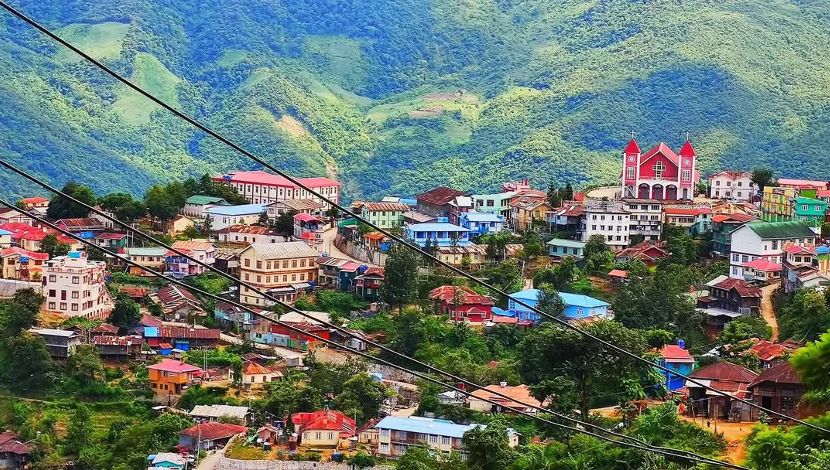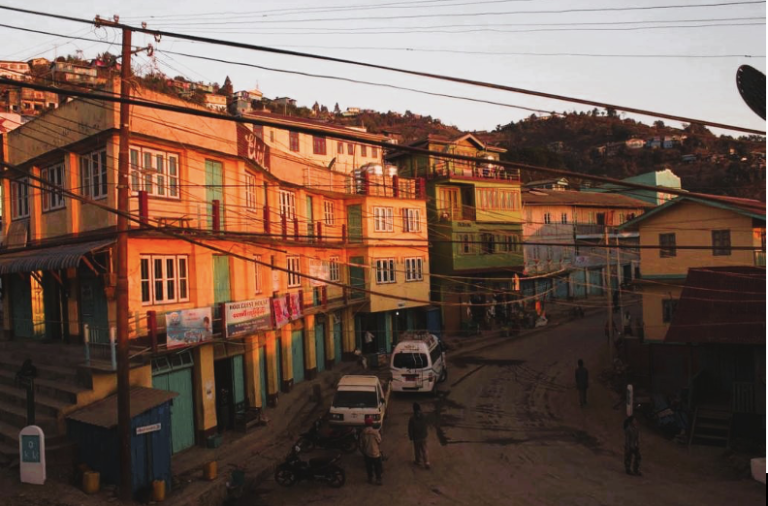An interview with the secretary of Falam Township IDPs Management Team (FTIMT) (Kale Branch) about the current situation of people displaced from Falam
It has been over two months since the Chin Brotherhood (CB) forces launched their operation to capture Falam town on 9 November 2024, as part of Operation Chin Brotherhood.
During these two months, the CB forces have captured all military junta bases in Falam town except for Infantry Battalion-268, which remains the only target left. Daily offensive attacks continue against this position.
The junta is currently mounting fierce resistance to prevent IB-268 from falling, using air support day and night. As the battle for Falam continues to intensify, the CB forces have restricted travel on roads leading into the town since early January for civilian safety.
All residents of Falam town, with a population of over 10,000, had evacuated before the start of the offensive. Most of them are now taking refuge in Kale. Others have sought shelter with relatives and friends in Hakha, Yangon, and rural areas.
Initially, Falam residents were able to manage with the food and money they brought when evacuating, they report facing increasing difficulties as their displacement continues. Khonumthung Media Group interviewed the secretary of FTIMT (Kale Branch) about the current situation of people displaced from Falam.

Q: In which areas have Falam residents primarily taken refuge, and how many? Has there been an increase in the number of displaced people?
A: The number of displaced people from Falam has increased. At first, some people stayed in villages and rural areas hoping it would be temporary. As time passed, they’ve come down to Kale due to healthcare, education, and livelihood difficulties. As of today, we have registered 1,160 households taking refuge in Kale, which amounts to around 5,000 people.
In Hakha, there are over 2,000 people. There are also people taking refuge in villages and rural areas. Some villagers are moving to Kale, and others who had found it hard to live in rural areas are relocating to Hakha. There are many in the Zokhawthar area as well. A few of them are in Yangon, but Kale has the highest concentration. In total, the number of displaced people is estimated at 13,000.
Q: Now that people have been displaced for over two months, how are they managing to find food and sustain themselves?
A: From what I know, in both Hakha and Kale, some people are carefully rationing their supplies. Some are receiving whatever support they can from relatives. There may also be some assistance from NGOs. Very few people are able to continue the same work they did while in Falam for their livelihood. Unemployment has increased significantly. Making a living has become difficult, though the situation is somewhat different for employees.
Q: As the displacement period continues, what difficulties are displaced Falam residents currently facing?
A: Right now, the main challenges are food and shelter. The first challenge is that, in some cases, about three families have to share small room. Over time, this shared living arrangement is becoming increasingly difficult to manage. So accommodation is a significant challenge. There isn’t a severe shortage of food in Kale yet. But, one issue is that Falam residents who are still taking refuge within Falam township are now running out of rice. Some people are trying to figure out how to deliver supplies to them.
For those who fled to rural areas, even if they have money, goods are becoming scarce – almost unavailable. In rural areas, (the main challenge) would be food security. Those who have come to Kale still have access to supplies. Some people can still manage to find food reasonably well. There are also families facing severe hardships. But, we’re helping each other as much as we can.
Q: Are displaced people currently receiving any aid? How is FTIMT helping them?
A: Our team’s approach is to contact Christian deacons and pastors. They have accurate records of their church members and others who have arrived here as displaced people. We ask them to connect with those in need. We’ve been able to help some struggling families identified by church pastors and deacons with one bag of rice and about 150,000 kyats per household. We’ve also included Gurkha Buddhists in this aid, as they’re also struggling with food security.
Since food is the primary challenge, we focus on ensuring no one faces food shortages, as much as we can. Everyone is facing difficulties, but as an organization, we prioritize preventing food shortages. Secondly, we maintain contact with local organizations where possible, and we help distribute their donated supplies to people we have registered.
Q: There must be many school-age children among the displaced people. What is their education situation like?
A: We’re quite worried about children’s education. Right now, since people fled suddenly, every school is accepting and enrolling students. People are concerned about whether their children can continue schooling next year. On our end, especially regarding school transfer certificates, some people don’t even know where to get them, so we can help guide them through the process.
Here, we haven’t finished collecting the number of all students yet. But it’s likely over a thousand. As for grade progression, we’ve heard that students may be able to advance based on their last October exam results in Falam. Also, some students here have obtained transfer certificates and are continuing their education. Others who can’t attend regular school are going to tutoring classes. Some still haven’t been able to get their transfer certificates. We’ve heard they might be promoted based on their last exam results, but we’re not sure if this will be officially recognized.
Q: It’s been over two months of displacement now, and with growing difficulties in food and shelter, what are the displaced people saying and hoping for?
A: They’re longing for their homes and town. Specifically, when they talk about wanting to return, they want to do so only after there’s some sort of solution – particularly if the area comes under civilian control. The elderly especially want to stay in their own homes. They say they don’t mind even if there’s no electricity, as long as there’s water.
As their displacement continues in other areas, concerns are rising about how they’ll sustain themselves in the long term. Some worry if they’ll starve to death. Here, things aren’t working out well anymore. They can’t work normally. They have to be careful about their movements, it’s not safe anymore. Also, as it’s getting hotter, people from the hill regions are finding it extremely hot in the lowland town of Kale. Children, elderly people who can’t tolerate this heat are very scared of the approaching summer season.
Q: Is there anything else you’d like to add?
A: Because this is happening across Myanmar, it’s our responsibility as displaced people to try to live harmoniously and peacefully wherever they end up. Firstly, in this situation where we don’t have a choice, I want to say that we should help each other as best we can while living together.


